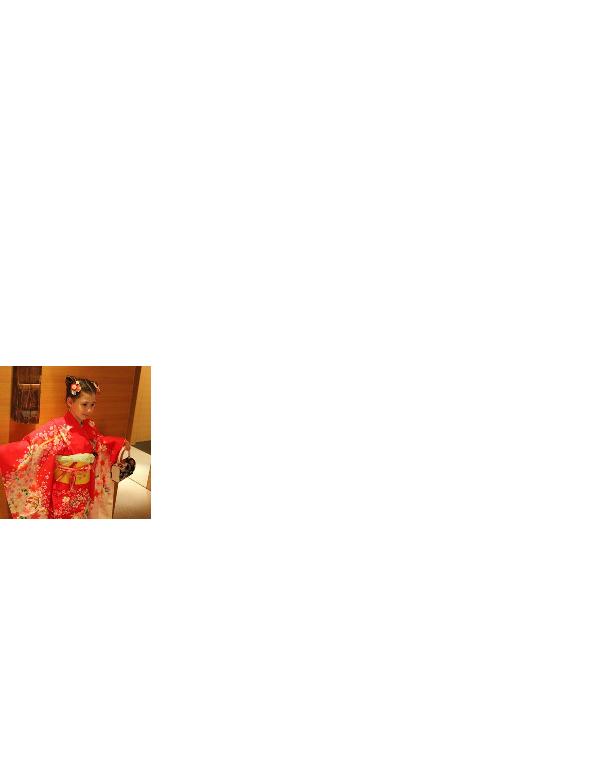
looks, but by how well it works.
in Kyoto, and not just for tourist purposes.
With their white-painted faces, traditional
Japanese hairstyles and fabulous kimonos,
they can be found gliding through the
perfectly maintained medieval streets of the
Gion neighbourhood.
Aged under 20, a maiko usually starts
her career as young as 15, working hard
to become a professional in Japanese
traditional culture and entertainment,
such as the fine art of flower arrangement,
performing tea ceremonies and mastering
traditional music and dance.
various options for a geisha experience,
depending on your budget. On the food front,
no visit to Kyoto would be complete without
experiencing kaiseki, described by Anthony
Bourdain in Mind of a Chef as, "a multi-course
meal, ultra-refined, obsessively local and
seasonal and very traditional".
Kyoto is, "one of the best restaurants in the
world, arguably the best Kaiseki restaurant in
Japan and an extraordinary experience".
overcame this impediment to fine dining at
our next port of call). But I thought the best
way to describe kaiseki and to explain the
different courses of the meal and how the
ingredients and dishes were closely tied to
each season was to quote Kikunoi owner and
chef Yoshihiro Murata's book.
it would try to evoke "...feelings of sitting
carpet, while watching the delicate pink petals
flutter elegantly to earth." (Sigh.)
affair of Kikunoi but certainly a great first
taste of this extraordinary and theatrical
five sensory dining experience. To whet your
appetite further here's the description of one
of the 10 courses: Salt-pickled `firefly' squid
(hotaru ika), sushi with kinome, grilled squid,
fava beans, poached egg bearing octopus,
mountain yam `butterfly', lily bulb (yurine)
with ikura, skewer of prawn, avocado and tai
(red sea bream) liver pate.
and daughter got fitted for kimonos, the
kids graduated from ninja school at the
Toei Samurai Movie studio, and we all rode
rickshaws through the serenely green
Bamboo Forest and visited every one of the
139 specialty shops at Nishiki Markets.
All activities are highly recommended.
Kyoto adventures have been, it's our next stop
in the town of Kinosaki that really blows us
away and is the real highlight of our trip.
three hours from Kyoto by train but a million
miles from care. Supposedly discovered in
the 8th century by a Buddhist saint, this
onsen (natural hot spring) town is where the
Japanese come to holiday, and it's clear why.
locals and visitors alike with the chance to
unwind and soak up the recuperative benefits
of submerging in the almost scaldingly hot,
mineral-rich water that emerges from the
centre of the earth.